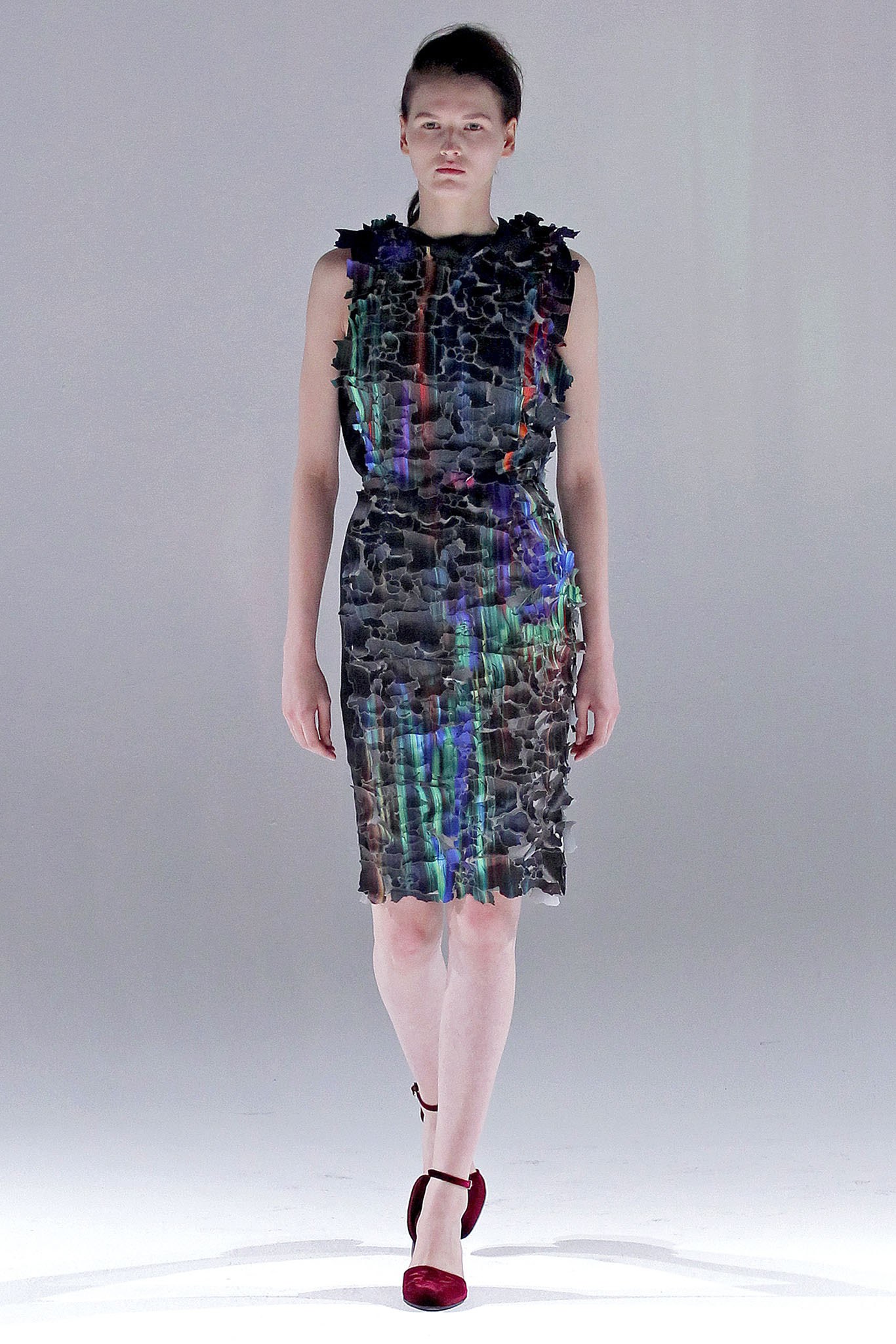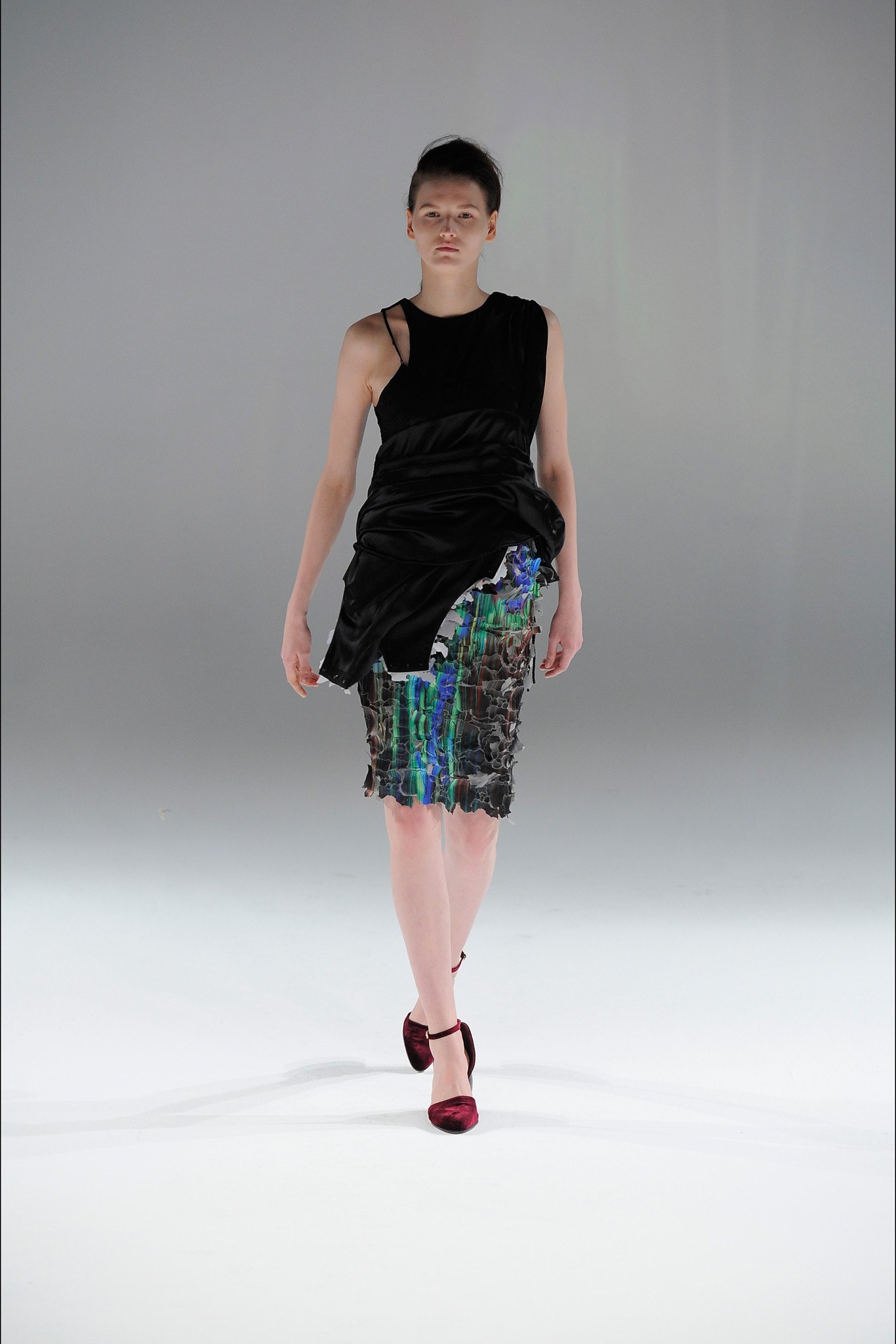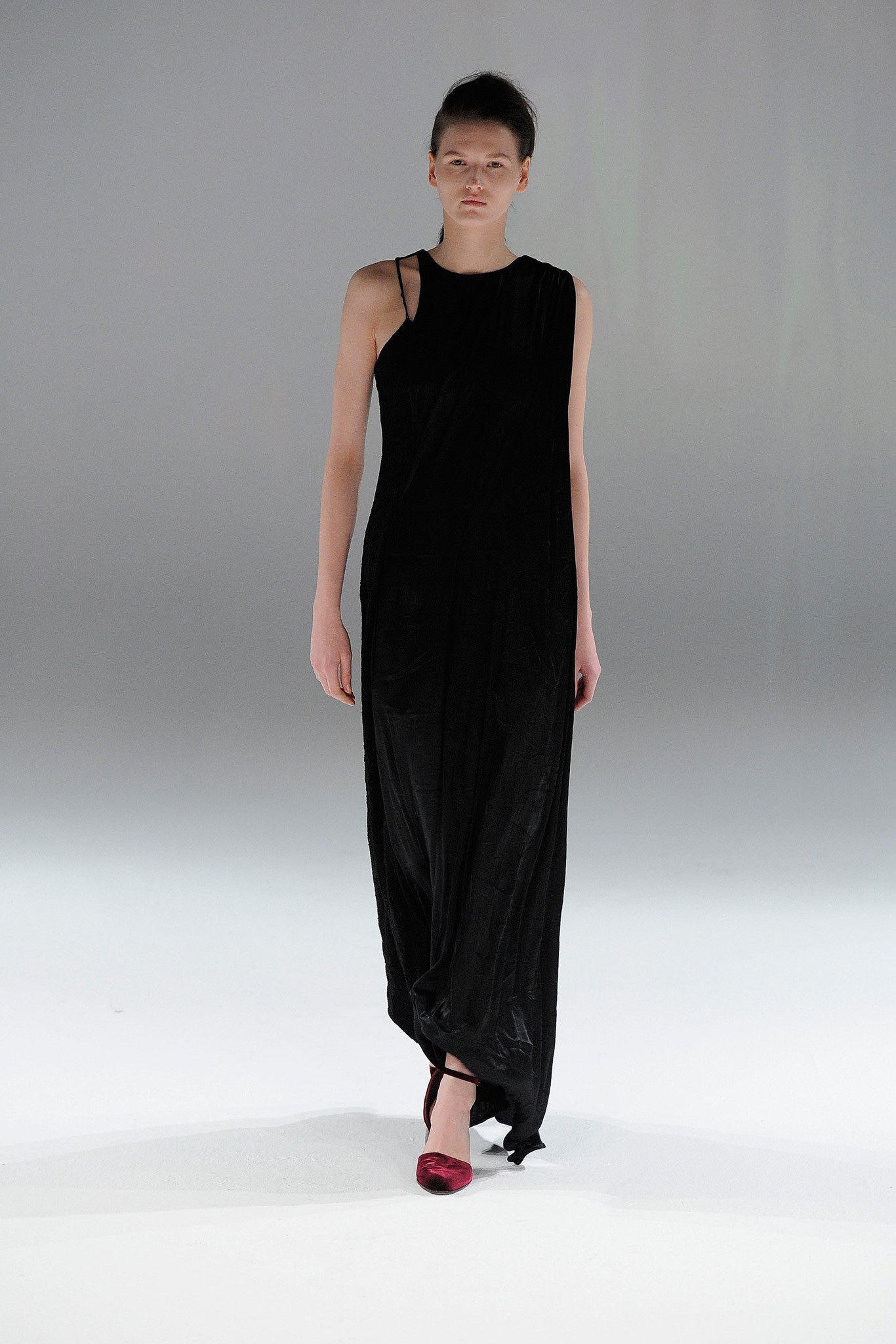Transformable Fashion: The Biggest Sustainable Clothing Trend That Never Was
H&M aims to be climate positive by 2040. [1] Zara makes t-shirts out of fabric created from their own textile waste. [2] Gina Tricot packages customers’ purchases in bags made from recycled plastic and oyster shells. [3] Nudie Jeans offers a free repair service on all its denim. [4] ASOS sells clothing manufactured by a collective that provides meaningful employment to citizens living in one of the most impoverished parts of Kenya. [5]
While we can quibble over each company’s underlying motive and impact, it’s clear that, sometime in the last 20 or so years, ethical fashion has invaded the mainstream. This article isn’t about the whys and hows of this change—those are big questions best tackled elsewhere—but rather about a much smaller where question. More specifically, where is transformable fashion among these myriad so-called “ethical” or “eco” strategies adopted by mainstream fashion brands?
Transformable fashion is an umbrella term for any clothing item designed so that its appearance can be easily altered, either by the wearer or by a specialized service provider. Some readers may point to certain clothing items, such as zip-off trousers, coats with removable lining, or Transitions Lenses as common examples of transformable fashion. These, I would argue (as I’m sure many mean girl fashionistas would agree) are not fashion. These are clothing items designed to perform a specific function. The only widely owned clothing item I can think of with a transformative property included for purely aesthetic purpose is the reversible jacket, which only just scratches the surface of what transformable clothing can do.
Transformable Fashion: An Overview
I am using “transformable fashion” throughout this piece to encompass a number of strategies that fall under this broad term. For example, some designers may incorporate zippers, hook and eyes, and drawstrings to allow users to add or remove facets of a garment, or change its silhouette, such as in Hussein Chalayan’s Fall 2013 collection. [6] The same effect might be achieved using electronics, as in Chalayan’s Spring 2007 collection. [7] There are also options such as photochromic and thermochromic inks to change a clothing item’s coloring, as used in ‘90s trend item Hypercolor t-shirts. [8], [9]
“Modular fashion refers to clothing items that have detachable pieces, so that one can easily alter the clothing item to suit changing needs and tastes over time.”
Under the umbrella of transformable fashion is also the concept of “modular fashion.” Modular fashion refers to clothing items that have detachable pieces, so that one can easily alter the clothing item to suit changing needs and tastes over time. [10] Modular fashion can incorporate and combine all or some of the construction methods mentioned above. A high-profile example can be seen in the dresses with removable layers in Yohji Yamamoto’s Spring 1999 collection. [11]
Transformable clothing aligns with a few different aspects of environmentally ethical fashion design. For one, a garment made in a manner that can change appearances easily may encourage consumers to buy fewer clothing items, given its versatility. Additionally, enabling users to affect the design of a garment may cause them to feel more emotionally attached to the garment, delaying its psychological obsolescence. [12] We might compare this to other strategies in sustainable fashion that emphasize buying fewer high-end garments that are more durable, as opposed to their fast fashion counterparts, [13] such as accessories brand Cuyana’s ‘fewer, better’ slogan.” [14]
There are other benefits unique to modular transformable fashion. Its ability to be taken apart and reassembled allows wearers to replace only damaged parts of a garment rather than purchasing an entirely new garment. [15] Modular clothing may also require less washing, since users may opt to clean only the parts of the garment that are more easily dirtied. [16] This is significant given that washing and drying clothing accounted for more than 13% of household electricity use in the UK in 2014 [17], and constitute the largest source of energy consumption in the lifecycles of cotton and polyester clothing. [18]
A High-fashion Pedigree
Perhaps the oddest thing about transformable fashion’s inability to become trendy is the fact that it has appeared in the fashion world, albeit thus far only in a high fashion context. As mentioned briefly above, superstar designers Hussein Chalayan and Yohji Yamamoto have both released collections featuring transformable clothing. The transformable pieces in Chalayan’s 2013 collection—such as a printed cocktail length dress that turns into a long black dress worthy of a Greek goddess—are owed particular note in this article due to their wearability, and to the fact that this collection walked when the demand for ethical fashion had already hit the mass market. [19] It’s tempting to suggest that transformable clothing may be one of those high-fashion gimmicks that function more like art pieces than clothing; offerings that cater to critics rather than consumers. However, as I will discuss in the next section, certain studies suggest that some consumers are indeed interested in the concept of transformable fashion.
Supply and Demand—Or Maybe Not
The amount of research directly investigating consumers’ interest in transformable fashion is small but suggests a positive attitude across a variety of different cultural backgrounds. Finland-based researchers Kirsi Niinimäki and Lotta Hassi conducted one of the most telling studies. [20] Their survey of more than 200 individuals investigated how likely users were to buy clothing items if the company complied with different sustainable strategies. 60% of respondents stated that they would be interested in modular clothing so that they might repair or construct the items themselves.[xviii] Compare this to the 22% of users surveyed who indicated interest in the more conventional concept of renting clothing for long (e.g., year-long) periods—a business model that’s actually in use by Netherlands-based denim brand Mud Jeans. [21] In the same questionnaire, users indicated a strong interest in other strategies, such as upgradable clothing (72% interested) and customizable clothing (68% interested)—strategies that could be served through transformable clothing. [22]
In the United States, Helen Koo, Lucy Dunne and Elizabeth Bye conducted open-ended interviews with women aged 20-40 to determine what types of transformation options in clothing most interest consumers. [23] 100% of participants indicated an interest in having changeable garment colors or patterns, or adjustable sleeve length, and 86% of participants indicated an interest in adjustable necklines or collars, among other findings. [24] The challenge, I believe, in evaluating this extremely positive reaction to transformable garments stems from the fact that participants in this study were reacting to transformable fashion as an abstract concept, rather than examining specific examples of transformable clothing, where matters of style and fit might have more bearing. In other words, women in these interviews indicated an interest in clothing that might magically transform from one garment to another. The specific garment and transformation method (and the aesthetics of performing that transformation) were not, to my knowledge, thoroughly investigated in their study.
Ryerson University’s Osmud Rahman and Minjie Gong did look into consumer reception of one form of transformable clothing. [25] Part of their research included a co-design activity conducted with more than 100 college students in China. Participants were allowed to select different materials and clothing parts to design a fictional modular garment. In this experiment, participants could choose within a range of different upper bodice, lower bodice/skirt, and sleeve styles that could be combined into a single garment using zippers. [26], [27] Although participants expressed interest in this kind of clothing design and most stated that they would be willing to pay more for transformable clothing, participants rated their satisfaction with their fictional garment at 2.80 out of 5. [28] Though the authors did not note if the participants indicated any inclination towards purchasing their hypothetical garment, I wouldn’t be surprised if, given the fairly middling level of interest indicated by participants, many consumers would choose not to.
I do not mean to disparage the designs used in Rahman and Gong’s study, but rather to underscore the fact that, transformable or not, personal taste always applies in fashion. For reasons that are beyond the scope of this article, sustainability alone isn’t a very good motivator to convince consumers to buy a given clothing item: the garment must still conform to the wearer’s expectations of aesthetics. [29], [30]
However, the research discussed above indicates that consumers are open to transformable clothing, which is to say that, skillfully implemented, transformable features on a garment could be considered an asset. If it’s not consumer interest preventing transformable clothing from going mainstream, perhaps it’s worth investigating the fashion companies instead.
The Business Perspective
On the surface, there seems to be an obvious answer to why modular clothing has never really taken off: clothing companies would never make clothing that encourages consumers to buy fewer things. That’s just bad business! However, given the cost of implementing many of the sustainable strategies used to introduce this article—and the challenge in assessing their financial returns—I don’t think that this serves as a full explanation. If a design strategy could potentially give one fashion company a competitive edge over others, why wouldn’t they pursue it?
To my knowledge, the only research on this topic that features fashion industry decision makers comes from the paper by Osmud Rahman and Minjie Gong that I have referred to previously. [31] Though limited to workers in the Chinese fashion industry, many of the responses they include from company owners, designers, and professors would likely apply across all cultural backgrounds.
In this study, participants reacted to the same modular prototype that the students were exposed to as described in the preceding section. However, the prototype the professionals examined had more components that could be combined. [32] Participants noted the high production cost of this specific modular garment prototype as a major disadvantage. [33] While it’s true that production costs will factor into the production of transformable fashion, it’s worth considering that modular transformable fashion is only one approach to transformable fashion, and Rahman and Gong’s prototype is only one implementation of that approach. By contrast, doctoral candidate at Aalto University Essi Karell proposed an infrastructure to support a designer creating modular pieces where the shop/maker is responsible for reassembling the garment for a fee, rather than the user. [34] I have similar thoughts regarding interviewees in Rahman and Gong’s study’s concerns about the garment’s aesthetic appeal and complexity: though these are valid criticisms that certainly factor into transformable clothing design, they might speak more to this specific implementation rather than to transformable fashion or even modular fashion as a whole. [35]
More general criticisms of transformable fashion largely related to consumers’ shopping habits. One participant in Rahman and Gong’s study spoke specifically about the impact of fashion trends. The authors explain, “If three-quarter length skirts are the trend, most consumers would not change to a mini skirt.” [36] There’s also a technical challenge related to transformable fashion and trends: even speaking broadly about transformable fashion, it’s difficult to imagine how this season’s tailored button-up could be seamlessly transformed into next season’s peasant blouse. However, I would also interject that any effort towards reducing the amount of clothing consumers unnecessarily buy should be considered a positive step.
Participants were also skeptical that users would react well to the garments because of the novel concept. [37] However, based on consumer responses catalogued in the previous section, this doesn’t seem to be the case. People seem to be receptive to the idea of transformable fashion; it’s the execution that counts.
Transforming the Fashion Industry
After this investigation, we arrive at something of a standoff situation. Consumers are declaring themselves open to transformable fashion, but cannot find many good options in the places that they like to shop. Meanwhile, fashion industry leaders are hesitant to invest in clothing production that may be more expensive and challenging than conventional methods, with the added fear that potential buyers will find the designs gimmicky rather than innovative. It’s easy to sympathize with the fashion industry in this respect: transformable fashion is a gamble. Unlike other sustainable strategies, such as switching to organic cotton, making a garment transformable implies a very visual change, which is not necessarily positive. Additionally, given the newness of transformable fashion, it may be challenging to use traditional fashion forecasting methods to predict how the public would react to such clothing.
When, and if, transformable fashion will come to a mainstream audience is just as difficult to predict. As antithetical as the fast fashion model is to ethical fashion—a microtrend takes off due to a style influencer’s endorsement, companies clamber to make a cheaper version market ready as quickly as possible—it seems possible that transformable fashion could become popularized by this same appetite for novelty.
Alternatively, it’s conceivable that the mainstream adoption of transformable clothing will start (and possibly end) with small businesses rather than big box brands. Transformable clothing is currently very niche, but various web technologies like social media services, online stores, and crowdfunding websites could help make it possible for transformable fashion designers to make an impact in a big way.
Transformable fashion may be challenging from a business perspective, but it is also an area rife with opportunity. I, for one, eagerly await the first designer to take up the mantle—and then, with a tug on some cleverly concealed zippers, turn it into a stunning gown.
Notes
[1] H&M Group, “Climate Positive Value Chain by 2040,” accessed 24 July, 2018, https://about.hm.com/en/sustainability/sustainable-fashion/climate-emissions.html.
[2] Zara, “Garments with a past,” accessed 24 July, 2018, https://www.zara.com/us/en/woman-trend-9-l1333.html?v1=1084647.
[3] Gina Tricot, “Sustainability Report,” 30, 2016, https://www.ginatricot.com/cms/system/csr/footer/pdf/ginatricot_hallbarhetsredovisning2016_eng_low.pdf.
[4] Nudie Jeans Co, “Free repairs for life,” accessed 24 July, 2018, https://www.nudiejeans.com/page/free-repairs-for-life.
[5] Danielle Kwateng-Clark, “Asos Collaborates With SOKO Kenya for 'Made in Kenya' Collection,” Teen Vogue online, published 26 April, 2017, https://www.teenvogue.com/story/asos-made-in-kenya-collection.
[6] Tim Blanks, “Fall 2013 Ready-To-Wear: Chalayan,” Vogue online, published 1 March, 2013, https://www.vogue.com/fashion-shows/fall-2013-ready-to-wear/chalayan.
[7] Sarah Mower, “Spring 2007 Ready-To-Wear: Chalayan,” Vogue online, published 4 October, 2006, https://www.vogue.com/fashion-shows/spring-2007-ready-to-wear/chalayan.
[8] Emily Spivak, “Why Hypercolor T-Shirts Were Just a One-Hit Wonder,” Smithsonian online, published 22 January, 2013, https://www.smithsonianmag.com/arts-culture/why-hypercolor-t-shirts-were-just-a-one-hit-wonder-3353436/.
[9] I would like to briefly acknowledge the fact that Hypercolor t-shirts do not quite conform to the definition of transformable clothing that I am using throughout this piece. Rather than the change in the item being intentionally triggered by the wearer, Hypercolor t-shirts were constantly in a state of change as the wearer’s body heat changed.
[10] Kirsi Niinimäki, and Lotta Hassi. "Emerging design strategies in sustainable production and consumption of textiles and clothing." Journal of cleaner production 19, no. 16 (2011): 1876-1883.
[11] “Spring 1999 Ready-To-Wear: Yohji Yamamoto,” Vogue online, accessed 24 July, 2018, https://www.vogue.com/fashion-shows/spring-1999-ready-to-wear/yohji-yamamoto.
[12] Osmud Rahman, and Minjie Gong. "Sustainable practices and transformable fashion design–Chinese professional and consumer perspectives." International Journal of Fashion Design, Technology and Education 9, no. 3 (2016): 233-247.
[18] Ibid., 235.
[19] Niinimäki, and Hassi, 1880.
[20] Zimmermann, Jean-Paul, Matt Evans, Jonathan Griggs, Nicola King, Les Harding, Penelope Roberts, and Chris Evans. "Household Electricity Survey: A study of domestic electrical product usage,” Intertek Testing & Certification Ltd. (2012): 28.
[21] This is subjective statement, but, by 2013, H&M’s Conscious Collection had existed for over a year, and, ethically minded (and arguably mainstream) fashion brands Reformation and Everlane, were both well-established.
[22] Niinimäki, and Hassi.
[23] Ibid.,1881.
[24] “How lease a jeans works,” MUD Jeans, accessed 24 July, 2018, https://mudjeans.eu/how-lease-a-jeans-works/.
[25] Niinimäki, and Hassi,1881.
[26] Helen Koo, Lucy Dunne, and Elizabeth Bye, “Design Functions in Transformable Garments for Sustainability,” International Textile and Apparel Association (ITAA) Annual Conference Proceedings, (2013).
[27] Ibid., 39.
[28] Rahman, and Gong.
[29] Ibid., 242-243.
[30] Ibid., 236.
[31] Ibid., 245.
[32] Ting-yan Chan, and Christina WY Wong, "The consumption side of sustainable fashion supply chain: Understanding fashion consumer eco-fashion consumption decision," Journal of Fashion Marketing and Management: An International Journal 16, no. 2 (2012): 193-215.
[33] Annamma Joy, John F. Sherry Jr, Alladi Venkatesh, Jeff Wang, and Ricky Chan, "Fast fashion, sustainability, and the ethical appeal of luxury brands," Fashion theory 16, no. 3 (2012): 273-295.
[34] Rahman, and Gong.
[35] Ibid., 236.
[36] Ibid., 243.
[37] Essi Karell, “Planned Continuity: Multi-life Garments through Modular Structures & Supplemental Services,” in Sustainable Fashion: New approaches, ed. Kirsi Niinimäki, (Helsinki: Aalto University publication series, 2013), https://shop.aalto.fi/media/attachments/1ee80/SustainableFashion.pdf.






